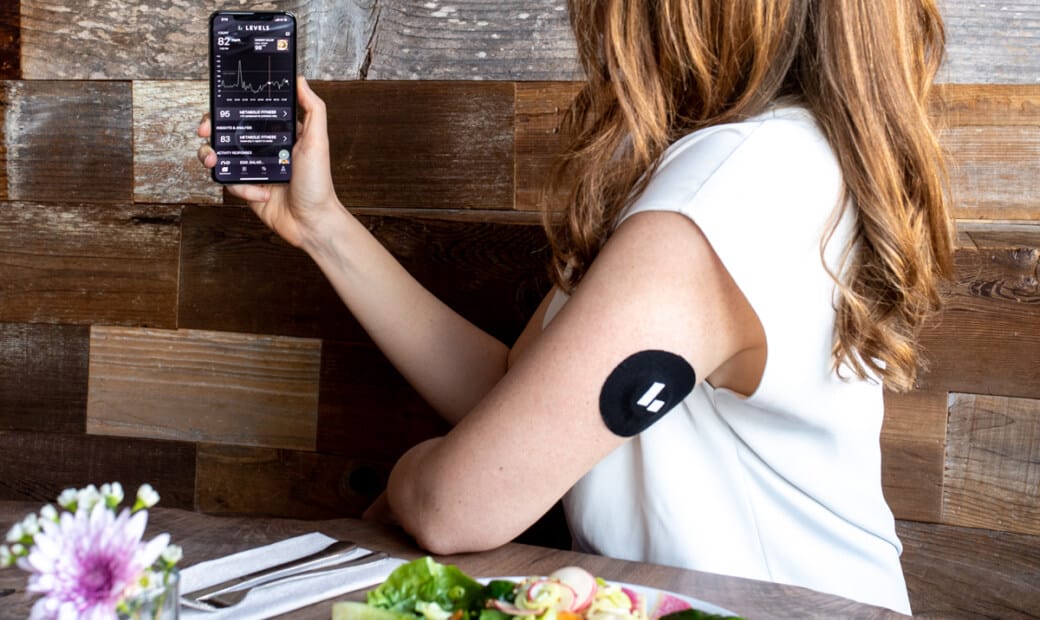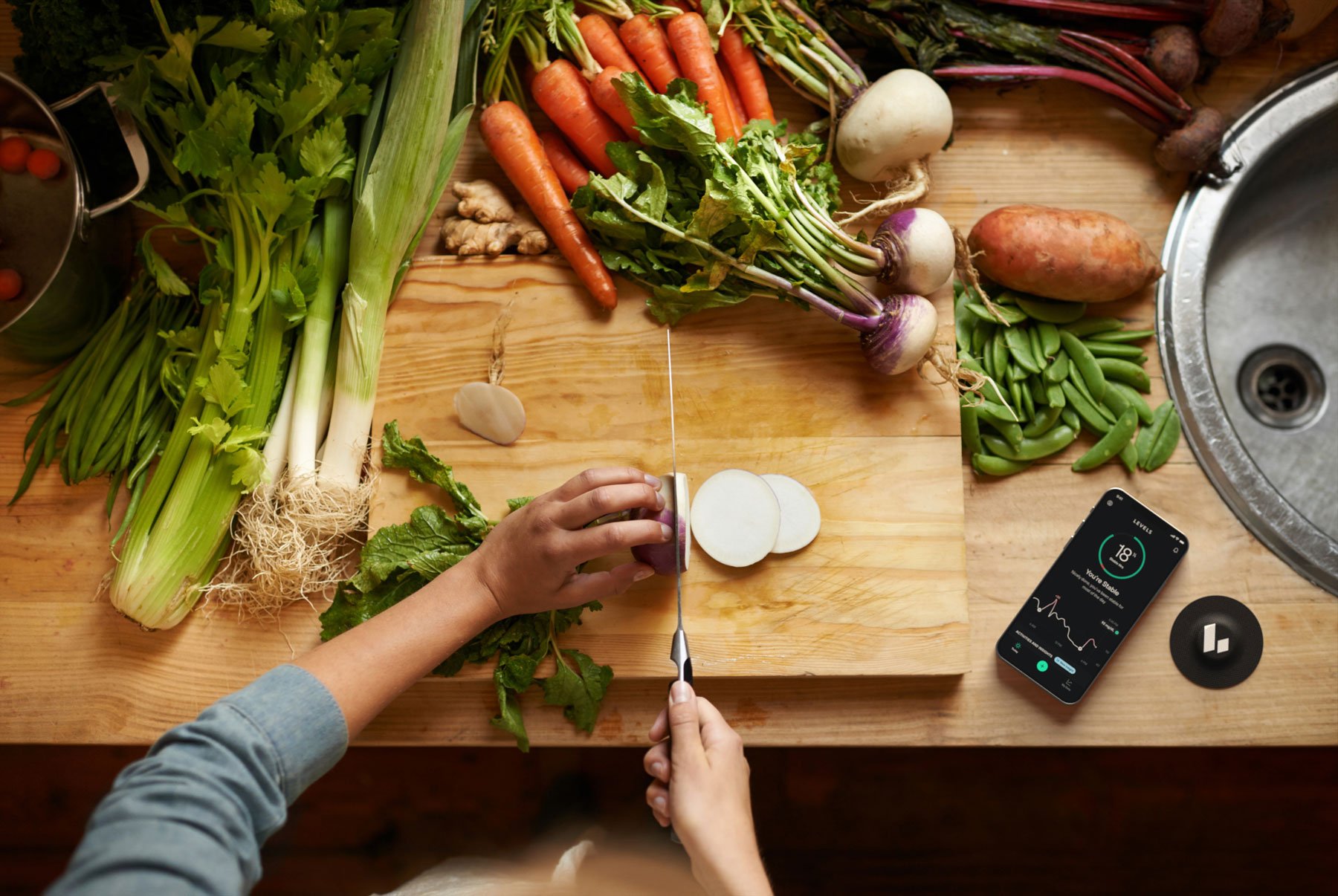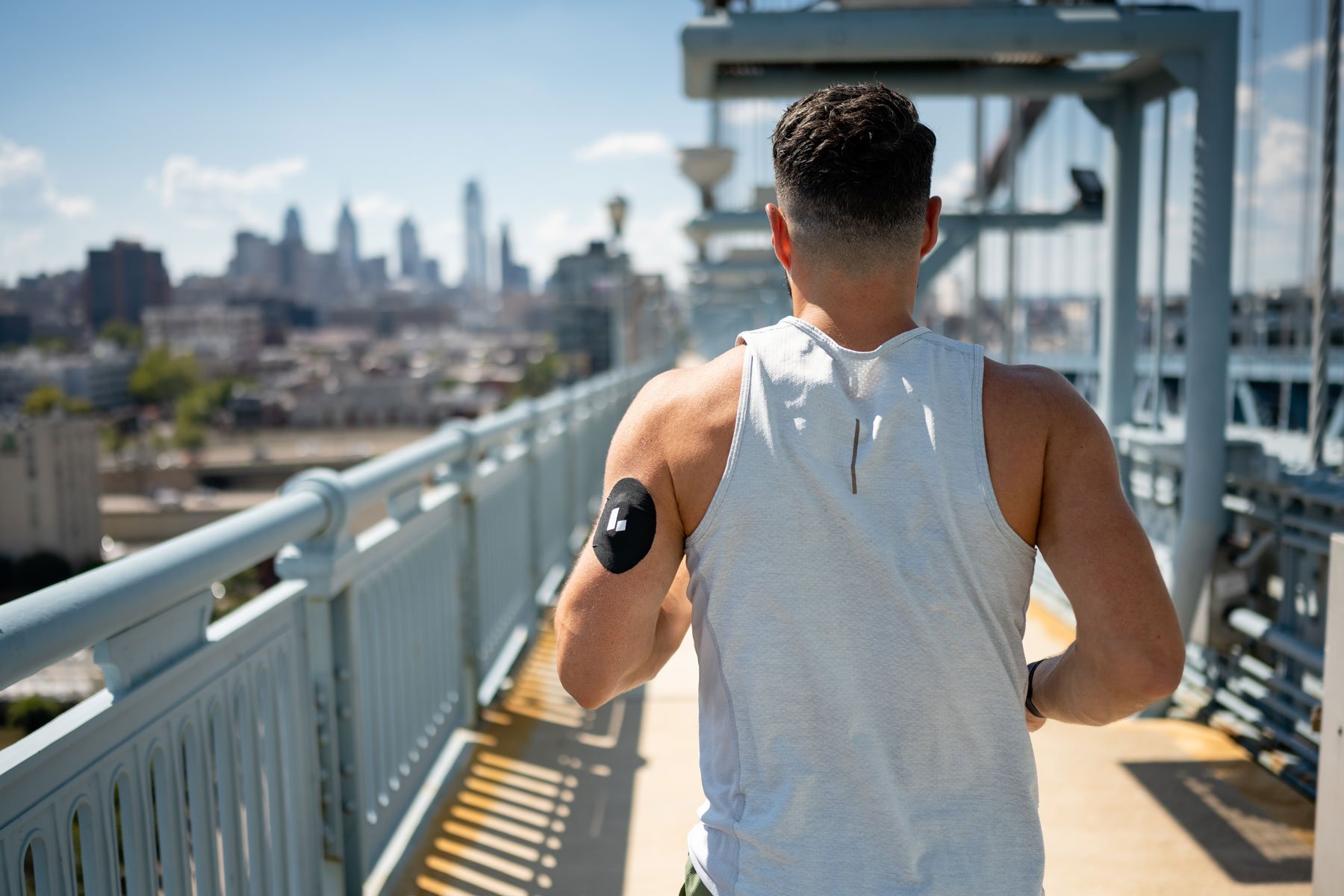If you’re a person without diabetes using a continuous glucose monitor (CGM), you want to know that the information it’s giving you is accurate enough to inform diet and lifestyle decisions. So you may feel stressed or even alarmed if the number on your CGM doesn’t match a number you get using a finger-stick device. Before you rush to replace your sensor, rest assured: it’s normal for these numbers to differ.
Studies comparing CGMs and finger-stick measurements find that their readings can vary by up to 25 percent, even when both devices work as expected. Why does this happen? The two techniques measure different things: CGMs monitor glucose levels in the space between cells; fingersticks test capillary blood.
Read on for more information about the differences between these devices, why you might want to compare them, and why precision is not the most valuable feature of either of these tests.
Comparing Accuracy: Fingersticks versus CGMs
The most accurate and reliable way to measure blood glucose is through an old-fashioned blood draw. Also known as a venous blood test, this method typically takes place in a doctor’s office and measures levels of glucose circulating in your blood.
Though highly accurate, blood draws aren’t a practical solution for folks who want to measure their glucose frequently—and certainly not if they want to measure it continuously.
But since they’re the gold standard, researchers use this technique to judge the accuracy of other glucose measurement technologies, including fingersticks and CGMs. Researchers refer to this type of comparison as mean absolute relative difference (MARD). A 20% MARD, for instance, indicates that the readings produced by a technique are, on average, 20% off from a blood draw
Finger-stick tests
As the name suggests, a finger-stick test involves lightly pricking your finger with a spring-loaded needle to draw a few drops of blood. You then apply the blood to a test strip, and insert it into a device (a glucose meter), which reads your blood sugar levels.
Though they both sample blood, a finger-stick test is different than a blood draw performed in a lab. The latter uses a larger blood sample, directly from the vein, allowing doctors to check your current circulating glucose. Finger-sticks, by contrast, measure blood sugar from capillaries, which are tiny blood vessels that connect veins and arteries. Finger-sticks also test just a drop or two of blood, a much smaller sample than a blood draw.
One 2016 study compared finger-stick readings to a lab-quality analysis and found a wide-ranging MARD (5-20%) across 17 finger-stick tests. The authors point out that the glucose meters “performed best at normal [blood glucose] concentrations, and less well in the hypoglycemic range” and that more recently FDA-approved tests showed lower error range than older ones. Other small studies of blood glucose meters have found that while there is a difference between them and lab draws, it’s not big enough to be clinically significant.
CGMs
While finger-stick tests have long been the norm for regular blood glucose monitoring, CGMs offer additional benefits as they take readings every few minutes, 24 hours a day, to provide a more comprehensive look at your blood sugar levels over time.
A CGM sensor is a little disc that sticks to the upper arm or stomach. When you apply it, a tiny spring-loaded needle inserts a small filament just under your skin that measures glucose levels. The device continually sends back readings that are wirelessly transmitted to a monitor (i.e., your phone) every few minutes.
The most significant difference between a CGM device and finger-stick test is where they get their information. Where finger-sticks measure from blood in your capillaries, CGMs test the interstitial fluid just under the skin’s surface. Interstitial fluid fills up spaces between cells; it helps keep cells lubricated and transports nutrients throughout the body. As blood makes its way from the heart to peripheral parts of the body like capillaries in our fingertips, the substances it carries (like glucose) leak into the interstitial fluid. It’s a different substance than blood altogether, although the two have a symbiotic relationship by exchanging nutrients and removing waste products from cells.
CGMs are also different than a blood draw, which measures glucose from venous blood—meaning flowing blood taken directly from a vein. A CGM doesn’t technically measure blood sugar; it measures glucose levels that have seeped into the interstitial fluid. It takes time for glucose to travel through your bloodstream and diffuse through multiple membranes before reaching the interstitial fluid. Studies have found that it can take 2-24 minutes for glucose levels from blood and interstitial fluid to match up.
This is why CGMs can paint a pretty good picture of your blood glucose levels but are still a proxy for what’s circulating in your veins.
CGMs can have a pretty wide MARD when compared with fingerstick or blood draw, and vary by system. One study comparing the Abbot Freestyle CGM with an Abbot fingerstick test found the MARD varied between 4%-25% across subjects, but that correcting for bias—essentially calibrating the CGM—reduced the error.
Another study noted that the time it takes for glucose to diffuse from blood vessels to interstitial fluid is a major reason for discrepancies in numbers compared to blood glucose tests. Another study concluded that despite the lag time, the majority of newer CGMs yielded accurate results with an average MARD of 10% or less.
Comparing CGM and Finger-Stick Readings
It might seem like overkill to use multiple glucose tracking devices. However, it’s common (and can actually be advantageous) for people to compare their CGM and finger-stick readings.
One benefit is that combining both data sets provides a more comprehensive picture of your blood sugar levels moment-to-moment and over time. Since CGMs measure data in real-time, they can fill in gaps between finger-stick tests. Some CGM devices also allow you to use a finger-stick test to calibrate the CGM.
If you choose to compare the two techniques, it’s normal for readings not to match. They should, however, generally trend in the same direction (i.e., when one value goes up, so should the other), though there may be a lag time of up to 20 minutes between when you see a rise on your finger-stick and when it appears on your CGM.
Whether you’re measuring glucose from interstitial fluid or blood, our bodily fluids are dynamic and changing constantly. Blood sugar isn’t just one constant level, so glucose concentrations vary from test to test. Even performing gold-standard blood draws back-to-back is likely to yield different results.
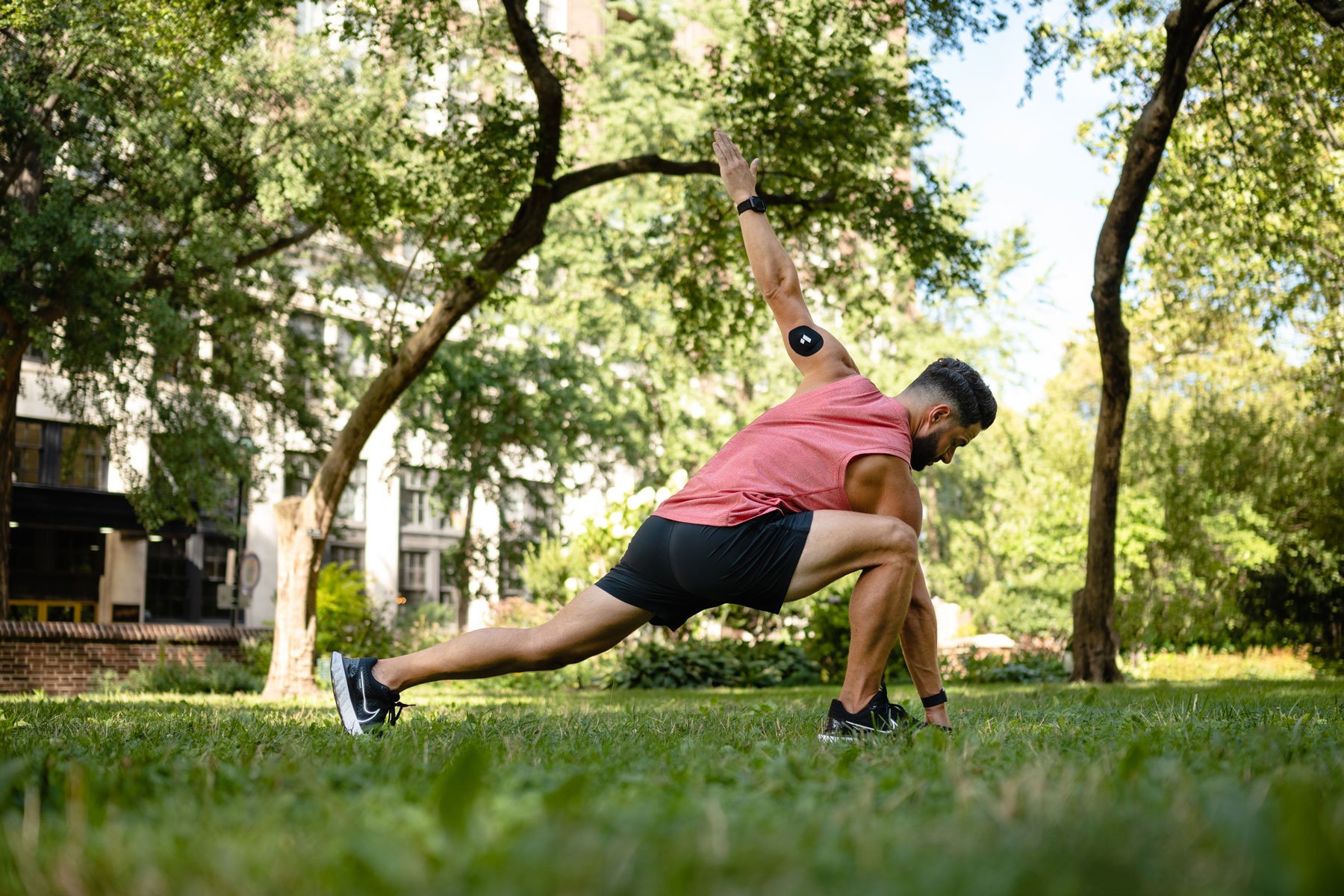
10 common questions about CGMs answered
Continuous glucose monitors are a vital tool in understanding how your choices impact your metabolic health, but wearing one can be a new experience. Here are the basics.
Read the ArticleWhy You Don’t Need Perfect Accuracy
The value of a CGM for a person without diabetes is to help you identify how different foods and activities affect your glucose levels. And you don’t need perfect accuracy to achieve this type of insight.
More critical than precisely reading your absolute glucose numbers is the ability to spot trends in the relationship between your lifestyle choices and blood sugar levels. For example, you may learn that your glucose spikes when you eat pears alone, but not if you top it with some Greek yogurt. Or you may find that when getting less than seven hours of sleep, you tend to see more significant surges in glucose, regardless of what you eat. With this knowledge, you can make more informed decisions about your diet and lifestyle.
Further, CGMs offer real-time feedback on how your body responds to different foods, activities, and stressors. By monitoring your blood sugar levels after trying out a new food, you can see whether you need to pair that ingredient with physical activity to blunt an oncoming spike.
Since metabolic health is all about trends over time—not individual events—using a CGM to make healthier choices doesn’t hinge on perfect accuracy.
That being said, sensor errors do occasionally happen. The sensor might be the issue if your readings are extremely low or continue to be way off your finger-stick measurements. Most devices will alert or prompt you to replace the sensor if it’s faulty.
What You Can Do to Improve Your CGM Accuracy
Though you don’t need perfect accuracy to get value from your CGM, you can take some simple steps to improve the data you get from your device:
- Apply in a fasted state. Glucose spikes can impact CGM accuracy, so avoiding eating at least 2-3 hours before applying a CGM is best. You’ll also want to avoid food and intense exercise during the warm-up period. Each device will have a different warmup period but generally takes a few hours.
- Apply at a consistent time: Whether it’s in the morning or at night, apply your CGM at a consistent time. You’ll want to do this when your glucose levels are most stable, typically two hours before or after a meal.
- Wait for it to calibrate: CGM sensors may take up to 48 hours to calibrate, meaning you might see greater fluctuations in your numbers within the first two days. CGMs typically become more accurate the longer you wear them. Performing a fingerstick calibration may improve accuracy but isn’t necessary as numbers from the two tests aren’t unlikely to match up anyway.
 Interested in using a CGM?
Interested in using a CGM?
Levels, the health tech company behind this blog, helps people get CGMs shipped directly to their door, and to understand their data to track meals and performance over time. Click here to learn more about Levels.
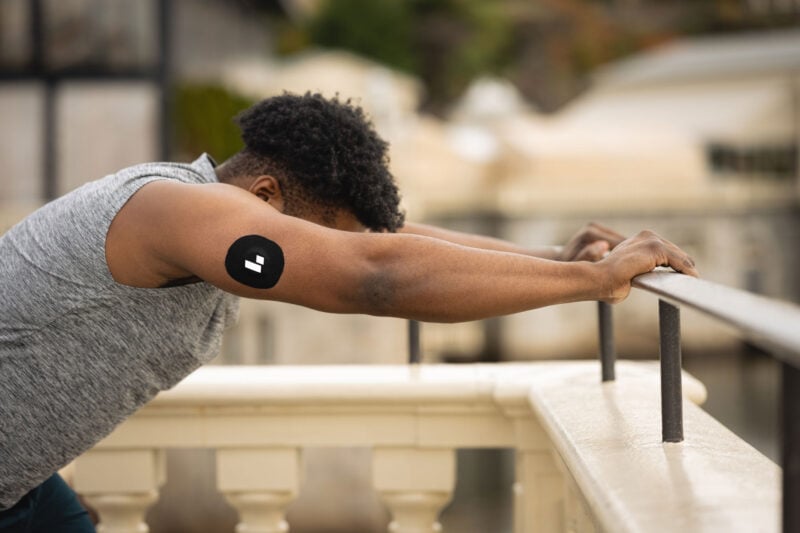
 Interested in using a CGM?
Interested in using a CGM?